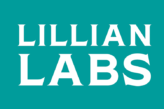We’d all love a button that when pushed would magically churn out spot-on product messaging for our sales team to run with. Unfortunately, getting your messaging right takes work. I’ve got a tried-and-true process that will guide you along the way and a helpful checklist to ensure you’ve vetted your messaging properly. Not as cool as a magic button, but they actually work, so read on…
There’s a lot riding on your sales messaging so getting your messaging right is crucial. Your messaging needs to be interesting (attention-grabbing), informative, persuasive, and convincing enough to drive a call to action… no big deal, right? Well, the good news is that while developing effective messages is more of an art form, there are processes and best practices you can follow to optimize your success.
I’ve had success using a process I adapted from an iterative design and management method that’s typically used for continuous business improvement called the Plan-Do-Check-Act (PDCA) process. Adapted for sales messaging, the process becomes:
PLAN – Create a clear strategy based on your knowledge of your customers and market (i.e. insights) and your objectives.
DO – Draft a range of messages and get internal feedback from a diverse range of people in marketing/sales functions. If you aren’t the best writer, enlist help.
CHECK – Test your lead message(s) either in a test market or market research. Dial testing is an effective way to measure your message’s effectiveness and trouble-shoot how to improve it.
ACT – Apply your learnings to optimize your messaging
I’m also big checklist person. So lastly, I want to share with you a checklist I use to ensure my message is ready for primetime:
- It is relevant to your audience (their unmet needs are addressed)
- It is relatable to your audience (uses their terminology and level of formality)
- It tells a story (has a logical flow to create interest and a desire for action)
- It is concise to the point, with no unnecessary extraneous words that make your message longer than it needs to be and add no value to the receiver (see what I did here?)
- It sounds good when spoken to feel more like a conversation
- It states facts, not promises (especially those with evidence, create credibility)
- It is honest (don’t try to hide the fact that you are trying to sell something)
- It describes the value, not just price (knowing your customers and their needs makes this easier)
If you’re taking on a product messaging project, I hope you find these tips both timely and helpful. If questions come up or need help, feel free to reach out.


